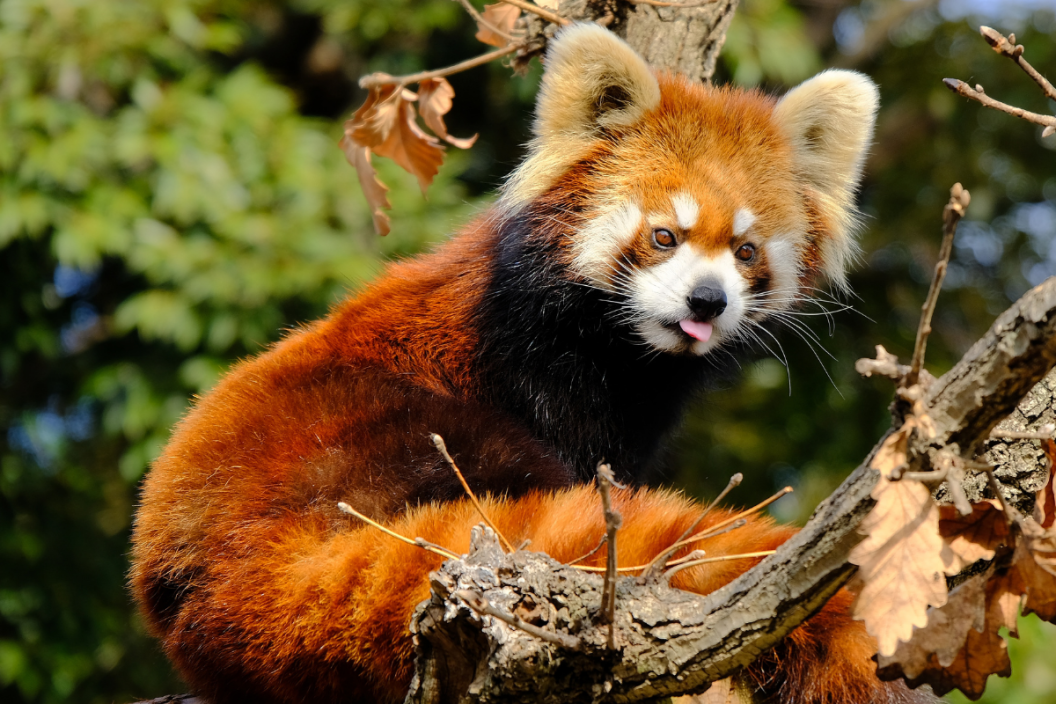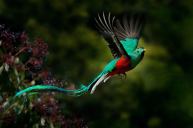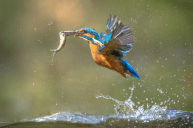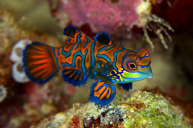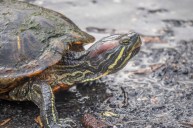Orange you glad to see these 11 animals?
You might know Nemo and his dad, the fish from Finding Nemo, but did you know that they're both clown anemonefish? The Japanese spider crab looks like a monster straight out of a children's book, and the orange baboon tarantula's nickname among tarantula fans is the "orange bitey thing." Meet them and 8 other orange animals below!
1. Clownfish
These bright orange fish were the inspiration for Finding Nemo. Nemo and his father, Marlin, are ocellaris clownfish, also known as clown anemonefish or fake clownfish. Anemonefish get their name from the sea anemones that they live in. There are 28 anemonefish varieties, and they come in a variety of colors, including pink, red, yellow, purple, blue, and multi-colored lines. These fish are popular on social media and stock photo websites such as Shutterstock for their bright, noticeable, photogenic colors.
2. Orangutan
Orangutans are primates that live in Indonesia and Malaysia. In Malay, the word orangutan means "man of the jungle." Orangutans live solitary lives in lowland forests. They eat wild fruits like lychees, mangosteens, and figs, and find water in tree holes. They build nests in woodland areas to sleep in at night and relax during the day.
3. Goldfish
The goldfish is native to East Asia but has spread to many other parts of the world. The Chinese domesticated it at least as early as the Sung dynasty (960-1279). Goldfish are naturally greenish-brown or gray in color, but a deviant fish may be black, spotted, golden, white, or white with silver scales.
4. Orange Tube Anemone
Orange Tube Anemones eat plankton and small crustaceans that they filter from the water column. They can also prey on small fish and crustaceans, paralyzing them with the nettle cells on their tentacles. After capturing prey, the Orange Tube Anemone uses its tentacles to transport the food to its mouth, which is situated in the middle of its body.
5. Japanese Spider Crab
Japanese spider crabs are the oldest of the Earth's 60,000 crustaceans and look like a monster straight out of a children's book. They can be found on the Pacific side of Japan as far south as Taiwan, in cold depths. Their round shells and long legs lend them the appearance of an arachnid, thus their common name. Spines are also found behind and in front of these species' small eye stalks. They thrive in temperatures below 50 degrees Fahrenheit and in depths of up to 1,640 feet below the ocean's surface. This crab is one of the largest arthropods on the planet, with no backbone, external shells, or external skeletons.
6. Monarch Butterfly
The monarch butterfly is one of the most well-known and researched butterflies on the globe. It has orange wings that are laced with black lines and surrounded with white dots. Millions of monarch butterflies travel from the United States and Canada south to California and Mexico for the winter.
7. Eastern Newt (Red Eft)
Since the Eastern Newt has a diverse life cycle of two distinct shapes, some people confuse it with two other species. The Eastern Newt's body is bright orange, bright to dull red, or brownish in the eft stage, with lighter spots surrounded by black. It has tiny black specks on the sides and back, as well as a dry, granular skin. The adult form is olive green on top with evenly spaced orange spots surrounded by black on the back and scattered tiny black specks along the back and sides.
8. Red Panda
With a bear-like body and heavy russet hair, the red panda is somewhat taller than a domestic cat. The abdomen and limbs are all black, with white marks on the side of the head and over the tiny eyes. Red pandas are a highly skilled and acrobatic species who like to live in trees. The Eastern Himalayas contain almost half of the red panda's habitat. These pandas use their long, bushy tails for balance and for comfort in the winter. The name panda is said to derive from the Nepali word ponya which means bamboo or plant-eating mammal. These orange animals love to hang around and eat, which we can certainly identify with.
9. Orange Baboon Tarantula
This critter is found on the African continent, mostly in Angola, but also in northern, eastern, and southern Africa. This species is sometimes referred to as the OBT, which means "Orange Bitey Thing" by those who keep tarantulas as pets. Sometimes Baboon Tarantula owners also use the word "pterror" to describe their pets, which is a pun on its Latin genus classification: Pterinochilus. These monikers refer to a specific orange color and shape that is valued in the hobby for its elegance and confrontational attitude.
10. Loggerhead Sea Turtle
Loggerheads get their name from their big heads, which sustain strong jaws and allow them to feed on hard-shelled prey like whelks and conches. A slightly heart-shaped reddish-brown top shell with five or six pleural scutes and a yellow bottom shell characterize the adult loggerhead. Adult males have long tails that stretch past the rear carapace, as well as a narrowing of the carapace that tapers towards the back. Hatchlings have shells that range from light gray to dark gray or orange. Their flippers are dark brown with white tips, and their belly is yellow with a fading pattern.
11. Andean Cock-Of-The-Rock
With bright red-orange plumage, black and white wings, and a broad fan-like crest that almost fully obscures its bill, the male Andean Cock-of-the-rock is an unmistakable sight. This cotinga, known as tunki in Quechua, is Peru's national pigeon. The Andean Cock-of-the-Rock, as the name suggests, prefers rugged cliffs and ravines near woodland streams.
What's your favorite orange animal? Share with us on the Wide Open Pets Facebook page!
